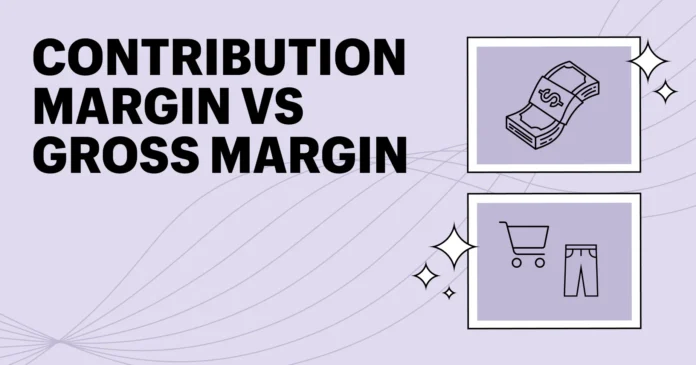Launching a new product is exciting and difficult. Businesses must decide on a pricing strategy during this phase. New product price tactics include market skimming, which is popular. In this detailed guide, we’ll discuss gross margin vs. contribution margin, how they affect market skimming price, and how organizations can implement this strategy.
Understanding Market Skimming
Setting a high initial price for a new product to target early adopters and maximize revenue from eager customers is called market skimming, price skimming, or premium pricing. As demand stabilizes and competition increases, prices may be dropped to attract more customers.
Gross Margin vs. Contribution Margin
Before discussing pricing methods, let’s distinguish gross and contribution margin:
Gross Margin:
Gross margin is the percentage difference between revenue and COGS. The portion of revenue that exceeds direct product production or acquisition costs.
Margin of Contribution:
Contribution margin is the difference between revenue and variable costs like materials, labour, and distribution. It reflects revenue available to cover fixed costs and generate profits. It is important to know about Market skimming also.
Using Gross vs. Contribution Margin in Market Skimming
Gross margin and contribution margin influence pricing decisions for new products when market skimming:
A Gross Margin Perspective:
Setting a high beginning price maximizes gross margins on each sale. This is especially beneficial when the product has unique features or delivers significant value to early adopters prepared to pay a premium. However, firms must ensure that their gross margin meets profitability criteria and covers production or acquisition costs.
Perspective on Contribution Margin:
Market skimming lets organizations take a large amount of revenue to pay variable costs and contribute to fixed expenditures and profits. Maximizing contribution margin helps firms evaluate the pricing strategy’s capacity to cover variable expenses and achieve profitability at multiple price points.
Making Market Skimming Work: Practical Tips
Businesses considering market skimming for new items should consider the following practicalities:
1. Understand client views, willingness to pay, and demand elasticity through market research. Find early adopters who will appreciate the product’s unique features and benefits.
2. Evaluate Competition: Compare the new product to competitors’ offerings. Consider competitive difference, brand reputation, and pricing strategies.
3. Strategically Price Initially: Consider production costs, value proposition, target market segments, and profit margins when setting the first pricing. Price the product according to early adopters’ perceptions.
4. Monitor Market Response: Track market response and customer input to evaluate the price plan. Over time, adjust prices and promotions to maximize sales and profit.
5. Plan price Dynamics: Create a price roadmap to alter the pricing approach as market conditions change. Pricing dynamics should take into account demand elasticity, competitive reactions, and product lifecycle stages.
Exposing Market Skimming: Success Strategies
Business is competitive and consumer preferences change, so corporations are continuously looking for new methods to win. Market skimming is a popular tactic. Price skimming, or market skimming, is when a corporation sets a high starting price for a product or service and then lowers it over time. This strategy lets companies take advantage of early adopters’ willingness to pay more and maximize income before dropping rates to attract more customers. In this blog, we discuss market skimming’s pros, disadvantages, and implementation factors.
Understanding Market Skimming
Market skimming works best for products or services with unique features or high value propositions that warrant a premium price. This method is used in fast-changing industries including electronics, software, and telecommunications. Companies can recover investment expenditures and make significant profits by attracting early adopters and enthusiasts who are willing to pay more to try a new product.
Conclusion
Marketing skimming is a powerful pricing technique for organizations wanting to maximize profits and brand image by capitalizing on early adopters’ willingness to pay premium prices. Businesses can overcome market skimming and find sustainable development possibilities in competitive marketplaces by segmenting markets, improving value propositions, and strategically altering prices.
Success requires a profound understanding of consumer behaviour, constant innovation, and flexible market adaption. Market skimming helps organizations stay profitable and competitive in a changing business environment.
Pricing strategies are crucial to new product launches, and market skimming is a compelling way to capture value and revenue from early adopters. Businesses can create profitable pricing strategies by understanding gross margin and contribution margin and how they affect price decisions. Market skimming can boost growth and performance in changing markets with proper planning, monitoring, and response.














